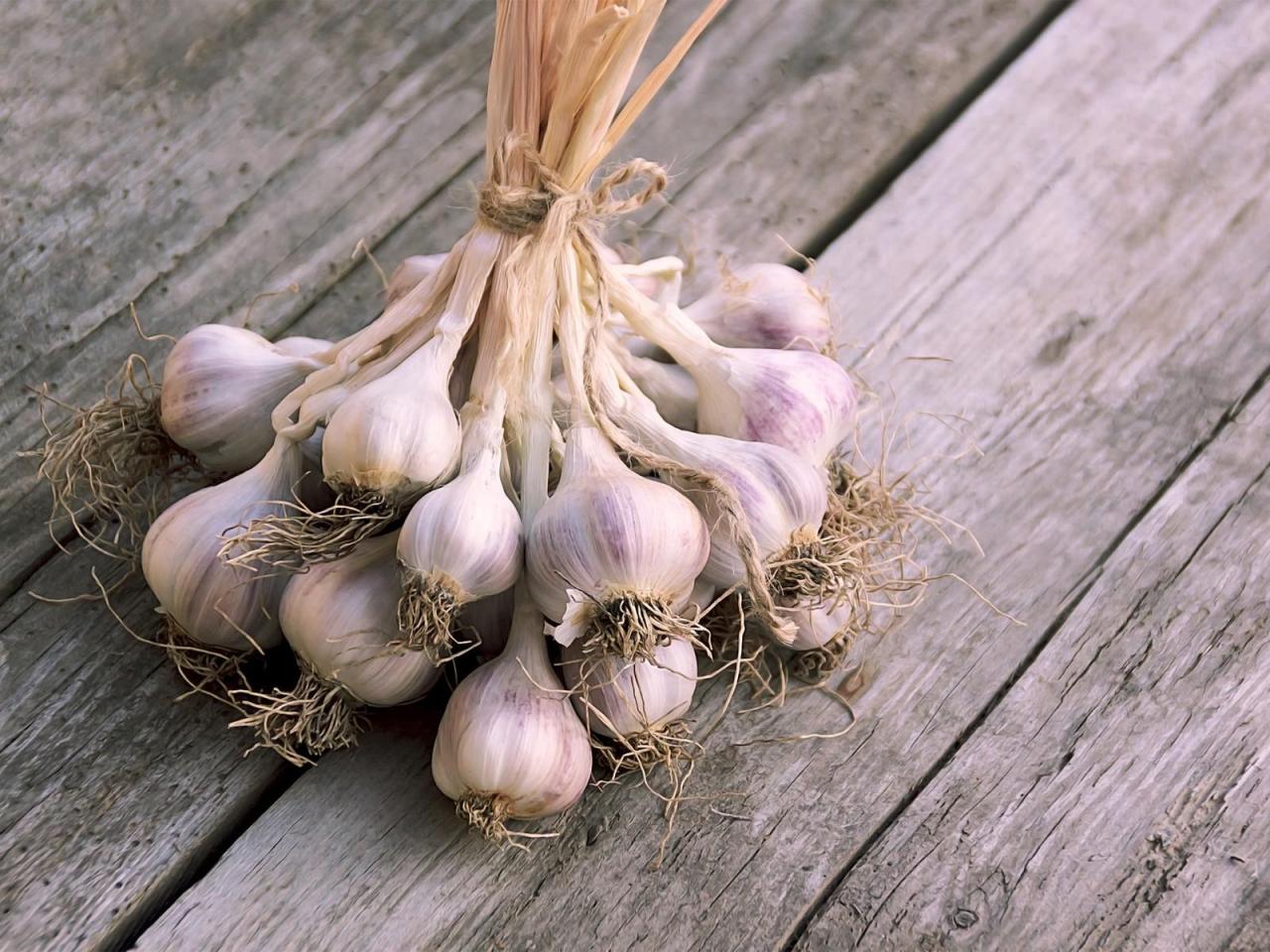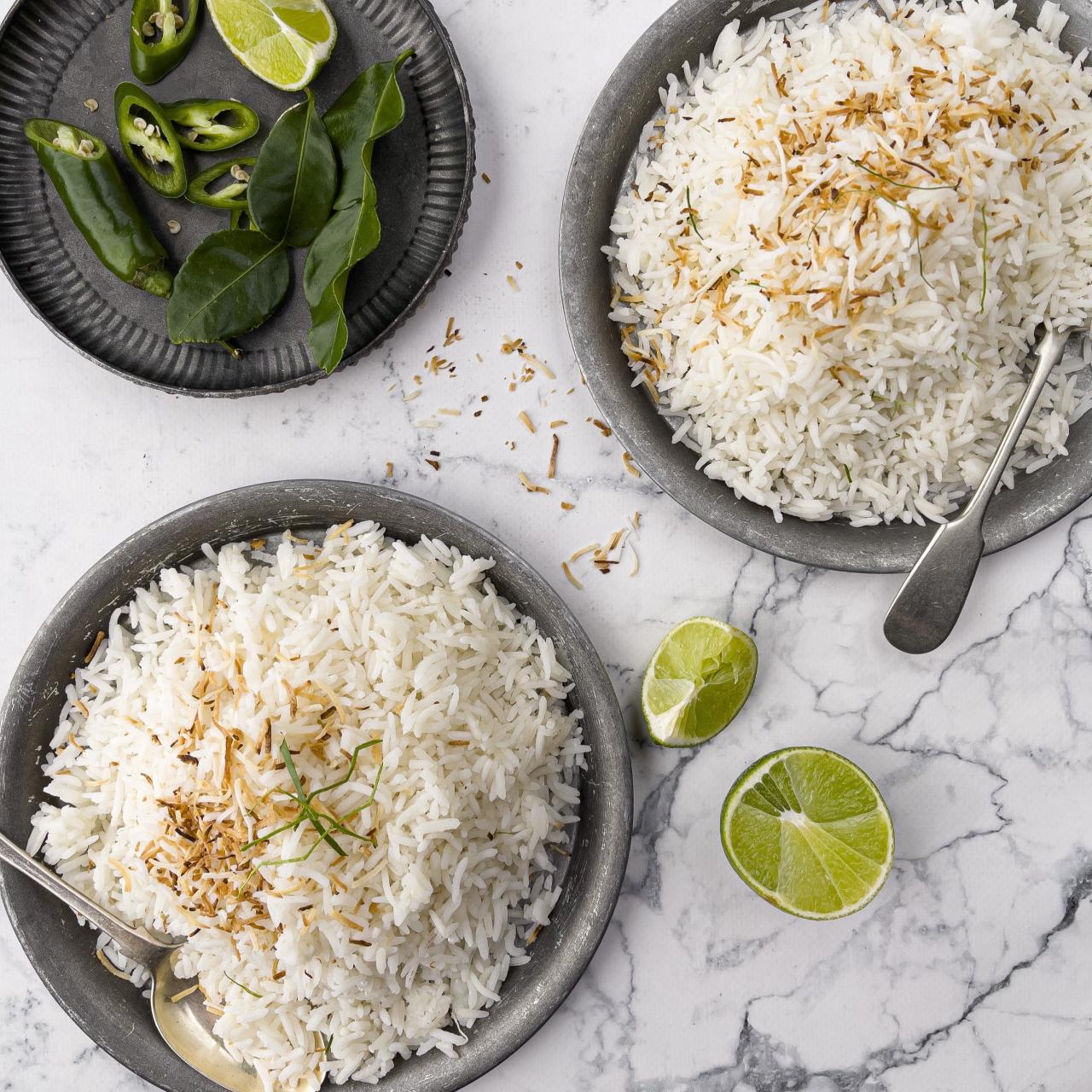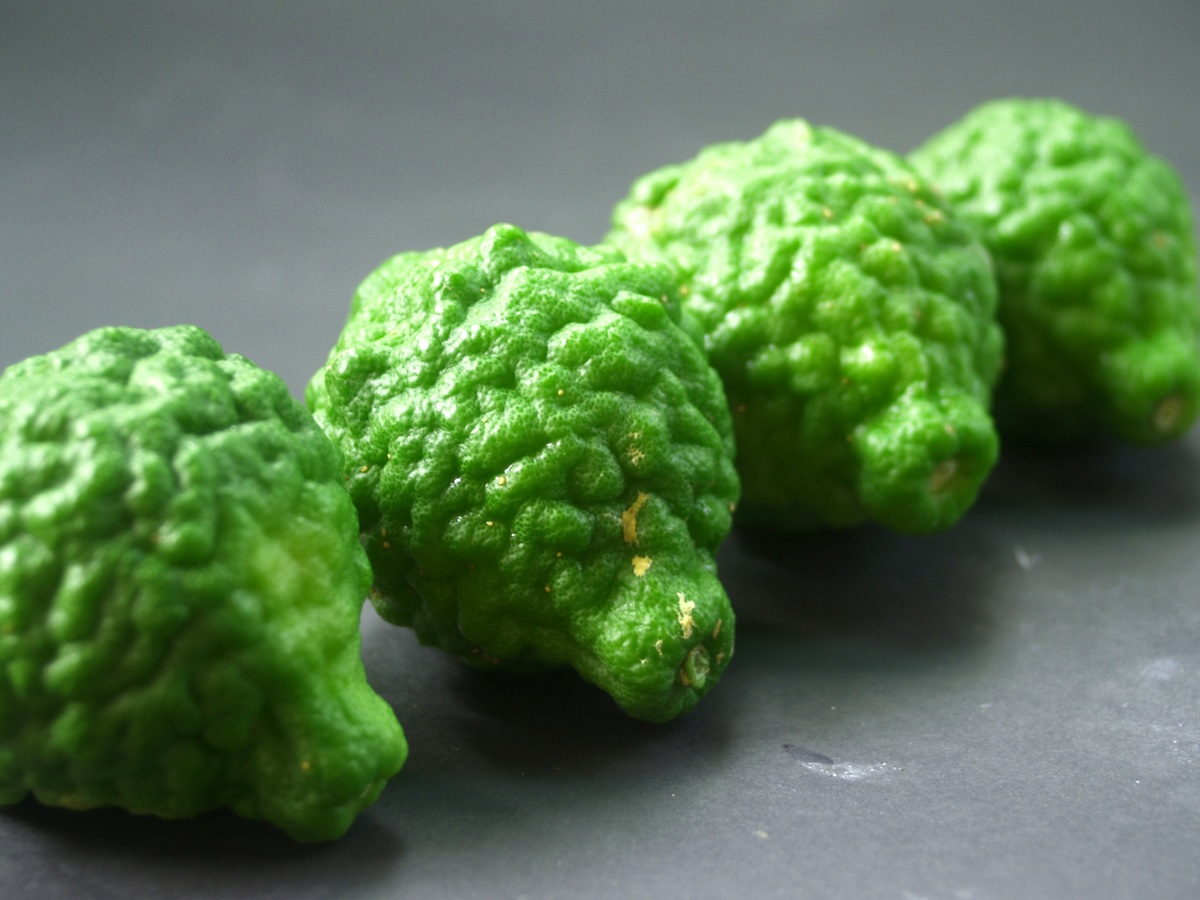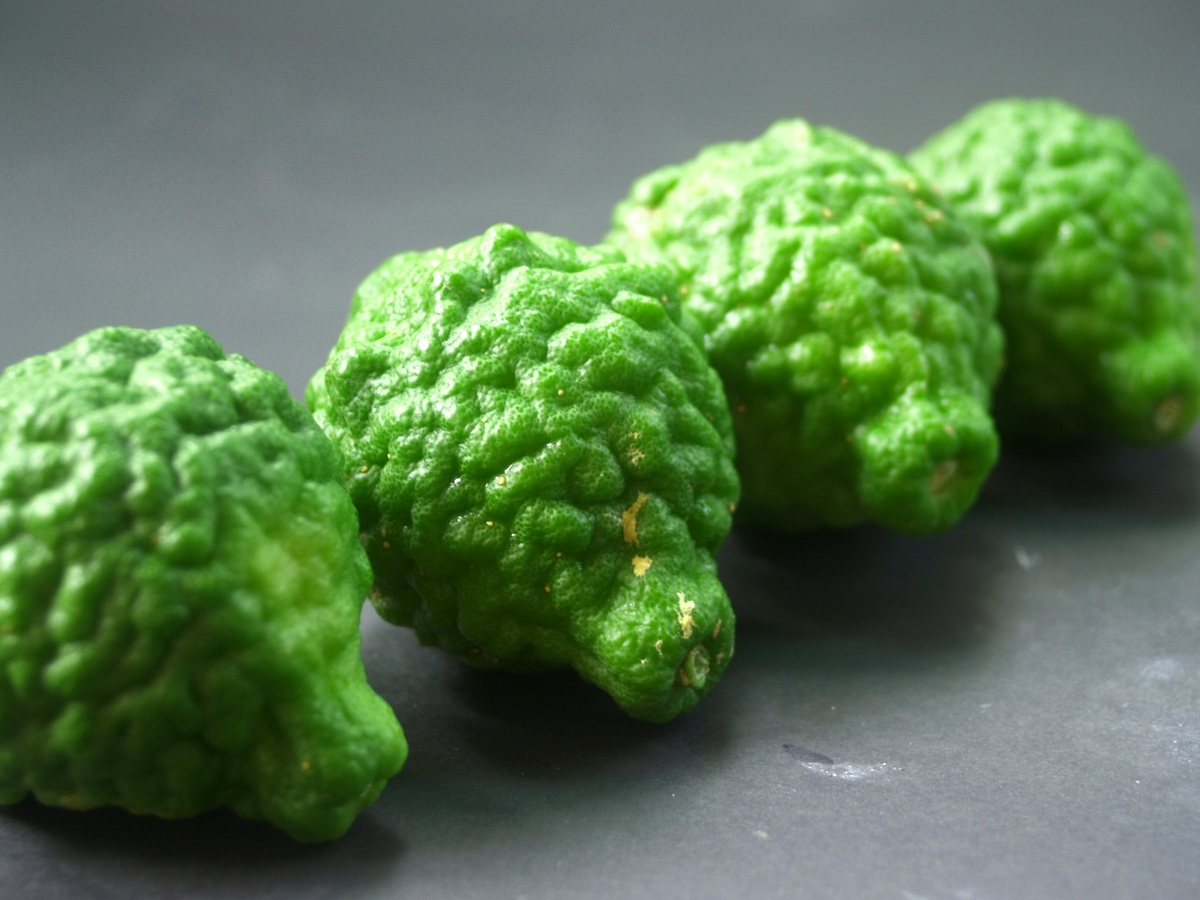The Ultimate Kaffir Lime Leaf Guide: From Growing to Cooking with This Aromatic Herb, is a comprehensive guide that delves into the fascinating world of this unique citrus leaf. From its botanical origins and captivating aroma to its diverse culinary applications and health benefits, this guide offers a complete understanding of kaffir lime leaves, empowering you to grow, harvest, and utilize this fragrant herb to enhance your culinary creations.
Kaffir lime leaves, also known as makrut lime leaves, are a staple ingredient in Southeast Asian cuisine, lending their distinctive citrusy and slightly floral notes to a wide range of dishes. Beyond their culinary appeal, kaffir lime leaves possess a wealth of health benefits, making them a valuable addition to any kitchen garden or culinary repertoire.
Introduction to Kaffir Lime Leaves
Kaffir lime leaves, also known as makrut lime leaves, are an essential ingredient in Southeast Asian cuisine, particularly in Thai, Vietnamese, and Laotian cooking. These fragrant leaves, with their unique citrusy aroma and flavor, add a distinct dimension to various dishes, from curries and soups to stir-fries and marinades.
Botanical Classification and Origin
Kaffir lime leaves belong to the speciesCitrus hystrix*, a small evergreen tree native to Southeast Asia. The leaves are characterized by their deep green color, slightly leathery texture, and distinctive, almost mitten-like shape. Each leaf consists of two lobes, joined together at the base, creating a unique visual appearance.
Flavor Profile and Aroma, The Ultimate Kaffir Lime Leaf Guide: From Growing to Cooking with This Aromatic Herb
The flavor of kaffir lime leaves is complex and multifaceted. They possess a distinct citrusy aroma, reminiscent of lime but with a slightly more herbal and pungent undertone. This unique flavor profile is attributed to the presence of volatile oils, including linalool, limonene, and citral.
Just like the fragrant kaffir lime leaf adds a unique zest to your culinary creations, propagating roses from cuttings can add a burst of vibrant color and intoxicating fragrance to your garden. If you’re looking to create a blooming oasis, Create a Rose Haven: How To Propagate Roses From Cuttings for a Blooming Oasis is a great resource to get started.
Once your rose haven is flourishing, you can then use your homegrown kaffir lime leaves to add a touch of exotic flavor to your dishes.
When used in cooking, kaffir lime leaves impart a refreshing, zesty, and slightly bitter note to dishes, balancing out the richness of other ingredients.
History and Cultural Significance
Kaffir lime leaves have a long history of use in Southeast Asian cuisine. Their origins can be traced back to ancient times, where they were highly valued for their culinary and medicinal properties. In Thai cuisine, kaffir lime leaves are an integral part of many traditional dishes, including
- tom yum* soup,
- green curry*, and
- pad thai*. The leaves are also used in various traditional remedies to treat digestive issues, skin infections, and other ailments.
Growing Kaffir Lime Trees

Cultivating a kaffir lime tree can be a rewarding experience, providing you with a continuous supply of aromatic leaves for your culinary creations. This guide delves into the optimal growing conditions for kaffir lime trees, including climate, soil, and sunlight requirements, and provides detailed information on propagation methods and planting techniques.
Climate Requirements
Kaffir lime trees thrive in warm, tropical climates with consistent temperatures above 60°F (15°C). They are sensitive to frost and cold temperatures, which can damage or kill the tree. Ideal growing conditions are found in USDA plant hardiness zones 9-11, where temperatures rarely dip below freezing.
Soil Requirements
Kaffir lime trees prefer well-drained, slightly acidic soil with a pH between 6.0 and 7.0. Sandy loam soil with good drainage is ideal, as it allows for adequate aeration and prevents root rot. Avoid heavy clay soils that retain water and can lead to root damage.
Sunlight Requirements
Kaffir lime trees require at least six hours of direct sunlight per day to flourish. They can tolerate partial shade, but optimal growth and fruit production occur with full sun exposure. When planting, choose a location that receives ample sunlight throughout the day.
Propagation Methods
Kaffir lime trees can be propagated using several methods:
Seeds
While it is possible to grow kaffir lime trees from seeds, this method is less common due to the time it takes for the tree to reach maturity and the possibility of genetic variation.
Cuttings
Propagating kaffir lime trees from cuttings is a more popular method, as it allows for quicker growth and ensures that the new tree retains the characteristics of the parent plant.
- Select healthy, mature branches from a kaffir lime tree.
- Cut the branches into 6-8 inch lengths, ensuring each cutting has at least two leaf nodes.
- Remove the leaves from the bottom inch of the cutting and dip the cut end in rooting hormone powder.
- Plant the cuttings in a mixture of peat moss and perlite, keeping the soil moist.
- Cover the cuttings with a plastic bag or dome to create a humid environment.
- Place the cuttings in a warm, bright location, but avoid direct sunlight.
- Once the cuttings have rooted, typically within 4-6 weeks, they can be transplanted into larger pots or directly into the ground.
Grafting
Grafting is a more advanced propagation method that involves joining a scion (a cutting from a desired variety) onto a rootstock (a different tree). This method is often used to produce trees with specific characteristics, such as disease resistance or improved fruit production.
Planting and Caring for Kaffir Lime Trees
Planting
- Select a sunny location with well-drained soil.
- Dig a hole twice the width and depth of the root ball.
- Amend the soil with compost or manure to improve drainage and fertility.
- Carefully place the kaffir lime tree in the hole, ensuring the root ball is level with the ground.
- Backfill the hole with the amended soil, gently tamping it down around the roots.
- Water the tree thoroughly to settle the soil and encourage root growth.
Watering
Kaffir lime trees require regular watering, especially during dry periods. Water deeply, allowing the soil to dry slightly between waterings. Avoid overwatering, as it can lead to root rot.
Fertilizing
Fertilize kaffir lime trees every 4-6 weeks during the growing season with a balanced fertilizer, such as 10-10-10. Avoid fertilizing during the winter months, as the tree is dormant.
Pruning
Pruning is essential for maintaining the shape of the kaffir lime tree and promoting healthy growth. Prune the tree in late winter or early spring before new growth emerges.
- Remove any dead, diseased, or damaged branches.
- Thin out the canopy to allow for better air circulation and sunlight penetration.
- Prune back any branches that are growing too long or in undesirable directions.
Harvesting and Preserving Kaffir Lime Leaves
The key to unlocking the full potential of kaffir lime leaves lies in understanding the optimal time for harvesting and the various methods for preserving their delicate aroma and flavor.
Harvesting Kaffir Lime Leaves
Harvesting kaffir lime leaves at the right time is crucial for maximizing their flavor and aroma. Young, tender leaves, typically those that are bright green and have a glossy appearance, offer the most vibrant taste and fragrance. Avoid harvesting leaves that are older, yellowing, or damaged, as they may have a bitter taste.
Preserving Kaffir Lime Leaves
Preserving kaffir lime leaves allows you to enjoy their unique flavor year-round. Several methods can be employed, each offering its own advantages and drawbacks.
Drying
Drying is a simple and effective method for preserving kaffir lime leaves. To dry leaves, wash them thoroughly and pat them dry with a clean towel. Spread the leaves in a single layer on a baking sheet lined with parchment paper.
Dry them in a warm, dry place, such as a dehydrator or an oven set to the lowest setting. Alternatively, you can air-dry the leaves in a well-ventilated area, away from direct sunlight.
Dried kaffir lime leaves retain their aroma and flavor for several months, making them a convenient option for long-term storage.
Freezing
Freezing is another common method for preserving kaffir lime leaves. Wash and pat dry the leaves, then wrap them individually in plastic wrap or aluminum foil. Place the wrapped leaves in a freezer-safe bag and freeze for up to six months.
Frozen kaffir lime leaves maintain their flavor and aroma well, making them a suitable option for quick and easy use.
Pickling
Pickling is a less common method for preserving kaffir lime leaves, but it offers a unique flavor profile. To pickle kaffir lime leaves, wash and pat dry the leaves. Combine a mixture of vinegar, salt, sugar, and spices in a saucepan and bring to a boil.
Add the leaves to the boiling brine and simmer for a few minutes. Once the leaves are tender, transfer them to a sterilized jar and pour the hot brine over them. Seal the jar tightly and allow the leaves to cool completely before storing them in a cool, dark place.
Pickled kaffir lime leaves have a tangy and salty flavor that can be used to add a unique twist to dishes.
Culinary Applications of Kaffir Lime Leaves

Kaffir lime leaves, with their distinct aroma and flavor, are a staple ingredient in Southeast Asian cuisine, adding a unique zest to a wide array of dishes. From curries and soups to stir-fries and marinades, these leaves impart a refreshing citrusy note that elevates the overall taste experience.
Culinary Applications Across Southeast Asian Cuisine
Kaffir lime leaves are a versatile ingredient that finds its way into diverse dishes across Southeast Asian cuisine. Here’s a glimpse of how these leaves are used in different culinary traditions:
Cuisine |
Dishes |
|---|---|
Thai |
Tom Yum Soup, Green Curry, Pad Thai, Stir-fried dishes with chicken, seafood, or vegetables |
Vietnamese |
Pho (Vietnamese noodle soup), Bun Cha (grilled pork with vermicelli noodles), Goi Cuon (fresh spring rolls) |
Indonesian |
Rendang (slow-cooked beef curry), Nasi Uduk (coconut rice), Soto Ayam (chicken soup) |
Malaysian |
Nasi Lemak (coconut rice with sambal), Laksa (spicy noodle soup), Rendang (slow-cooked beef curry) |
Using Kaffir Lime Leaves in Cooking
Kaffir lime leaves can be used in various cooking methods, adding their unique flavor and aroma to different dishes:
Stir-frying
Kaffir lime leaves are often added towards the end of stir-frying to retain their vibrant aroma. They are typically torn into smaller pieces or finely sliced before being incorporated into the dish.
Steaming
In steaming, kaffir lime leaves are usually added to the steamer basket along with other ingredients. This method allows the leaves to infuse their flavor into the food while retaining their delicate texture.
Simmering
When simmering, kaffir lime leaves are added to the pot early on, allowing their flavor to infuse into the broth or sauce. They can be left whole or torn into pieces, depending on the desired level of flavor and texture.
Flavor Pairings and Culinary Benefits
Kaffir lime leaves complement a wide range of flavors, adding a bright citrusy note that enhances the overall taste experience.
While the aroma of kaffir lime leaves might be best enjoyed in a steaming bowl of Thai curry, their visual appeal is no less captivating. Imagine, for instance, a stunning display of autumn leaves, their vibrant hues echoing the warmth of a comforting curry.
If you’re looking to create a similar spectacle in your own home, be sure to check out How to Create a Stunning Autumn Leaf Garland: Expert Tips for Beautiful Results. The vibrant colors of autumn leaves can inspire a range of culinary creations, just as the citrusy fragrance of kaffir lime leaves can elevate a simple dish to new heights.
Flavor Pairings
Kaffir lime leaves pair well with:
- Spicy dishes: Their citrusy notes help to balance out the heat of chili peppers and other spices.
- Seafood: The combination of kaffir lime leaves with seafood creates a refreshing and aromatic dish.
- Chicken and pork: The leaves add a bright and flavorful touch to these proteins.
- Coconut milk: The combination of kaffir lime leaves and coconut milk is a classic pairing in Southeast Asian cuisine, creating a rich and creamy dish.
Culinary Benefits
In addition to their culinary uses, kaffir lime leaves offer various health benefits:
- Rich in antioxidants: Kaffir lime leaves are a good source of antioxidants, which can help protect the body against cell damage.
- Anti-inflammatory properties: The leaves contain compounds that may have anti-inflammatory properties, potentially aiding in reducing inflammation in the body.
- May aid in digestion: Kaffir lime leaves are known to aid in digestion, promoting a healthy gut.
Health Benefits of Kaffir Lime Leaves
Kaffir lime leaves, with their distinctive aroma and flavor, offer more than just culinary delights. They possess a rich nutritional profile and have been traditionally used for their medicinal properties. This section delves into the health benefits of kaffir lime leaves, exploring their nutritional composition, potential therapeutic applications, and traditional uses.
Nutritional Composition of Kaffir Lime Leaves
Kaffir lime leaves are a good source of essential vitamins, minerals, and antioxidants. They are particularly rich in vitamin C, a powerful antioxidant that helps protect cells from damage caused by free radicals. They also contain vitamin A, which is crucial for maintaining healthy vision and skin.
Kaffir lime leaves are a good source of minerals such as potassium, calcium, and magnesium. Potassium plays a vital role in regulating blood pressure, while calcium is essential for strong bones and teeth. Magnesium is involved in various bodily functions, including muscle and nerve function.Furthermore, kaffir lime leaves are packed with antioxidants, including flavonoids and phenolic compounds.
These compounds have been linked to various health benefits, such as reducing inflammation and protecting against chronic diseases.
Potential Health Benefits of Kaffir Lime Leaves
Numerous studies have investigated the potential health benefits of kaffir lime leaves. Some of the key benefits include:
Anti-inflammatory Properties
Kaffir lime leaves contain compounds with anti-inflammatory properties. Studies have shown that extracts from kaffir lime leaves can inhibit the production of inflammatory mediators, such as prostaglandins and leukotrienes. This suggests that kaffir lime leaves may be beneficial in managing inflammatory conditions, such as arthritis and asthma.
Antimicrobial Properties
Kaffir lime leaves have demonstrated antimicrobial activity against a range of bacteria, fungi, and viruses. This property is attributed to the presence of essential oils and other bioactive compounds. Kaffir lime leaves have been traditionally used as a natural remedy for skin infections and digestive problems.
Digestive Health
Kaffir lime leaves are known to aid digestion. They contain enzymes that help break down food, and their essential oils can stimulate the production of digestive juices. Kaffir lime leaves are often used in traditional remedies to relieve indigestion, bloating, and constipation.
Traditional Uses of Kaffir Lime Leaves in Medicinal Practices
Kaffir lime leaves have a long history of use in traditional medicine. They have been used to treat a variety of ailments, including:
- Skin Infections:Crushed kaffir lime leaves are applied topically to treat skin infections, such as boils and acne.
- Respiratory Problems:Kaffir lime leaves are used to make teas and inhalations to relieve symptoms of colds, coughs, and bronchitis.
- Digestive Issues:Kaffir lime leaves are used to prepare digestive remedies to alleviate indigestion, bloating, and diarrhea.
- Fever:Kaffir lime leaves are used to make teas that are believed to help reduce fever.
It is important to note that while traditional uses of kaffir lime leaves suggest potential health benefits, further scientific research is needed to validate these claims.
Final Thoughts: The Ultimate Kaffir Lime Leaf Guide: From Growing To Cooking With This Aromatic Herb

Whether you’re a seasoned chef or a home cook eager to explore new flavors, this guide provides a roadmap for incorporating kaffir lime leaves into your culinary journey. From understanding the ideal growing conditions and harvesting techniques to mastering the art of preserving and utilizing these fragrant leaves, this guide equips you with the knowledge and skills to unlock the full potential of kaffir lime leaves in your kitchen.
Commonly Asked Questions
Can I use kaffir lime leaves in place of regular lime leaves?
While both are citrus leaves, kaffir lime leaves have a distinct flavor profile that is more complex and slightly floral compared to regular lime leaves. While they can be substituted in some instances, they are not interchangeable.
Where can I buy kaffir lime leaves?
Kaffir lime leaves are readily available at Asian grocery stores, specialty markets, and online retailers. You can also find them fresh, dried, or frozen.
How long do kaffir lime leaves last?
Fresh kaffir lime leaves can last for several days in the refrigerator if stored in a plastic bag. They can also be preserved by drying, freezing, or pickling, extending their shelf life.
